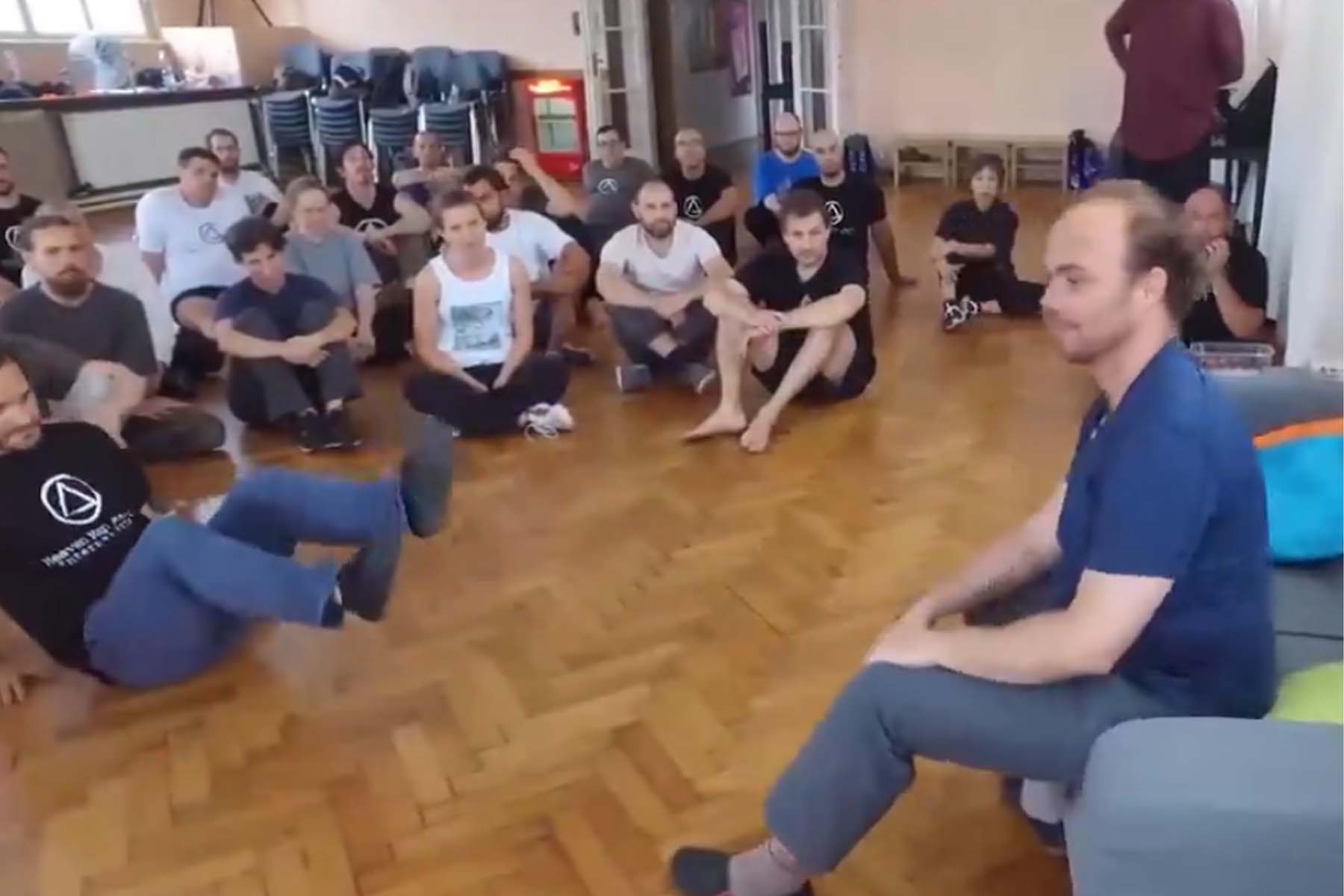In the world of traditional Chinese martial arts, few topics spark more heated debate than the authenticity and effectiveness of modern Tai Chi practices. Adam Mizner, a self-proclaimed 6th generation Yang style Tai Chi Chuan teacher, has garnered attention through his Heaven Man Earth Internal Arts International organization, founded in 2004.
Mizner claims extensive credentials, including study under eight primary teachers of Yang Style Tai Chi from various lineages including Huang Sheng Shyan, Yang Shaohou and Yang Jianhou. His promotional materials describe a decade spent “going in and out of monasteries and living in caves and forests.” He asserts proficiency in multiple internal arts disciplines, including Taijiquan, Nei Gong and meditation.
I wanna know how much is the helper getting paid for this performance pic.twitter.com/IUcu68VNQn
— calfkicker (@calfkickercom) February 3, 2025
On the internet, he’s most famous as the mad scientist looking guy who was throwing opponents with a finger while sitting on a bench.
The Journey from External to Internal Arts
Mizner’s martial arts journey began casually in childhood with Judo. At age 16, he started intense training in Praying Mantis Kung Fu, which he pursued for four years. During this time, he also practiced what he admits wasn’t authentic Tai Chi – describing it as “slow kung fu.”
The turning point, he claims, came after watching a video of Master Huang Xingxian effortlessly throwing young practitioners while maintaining a joyful demeanor. This contrasted sharply with his Mantis teacher who, while being a serious martial artist, didn’t exhibit the same inner joy and balance that Mizner observed in Master Huang..
Swooshhh pic.twitter.com/bZUQcNymYw
— calfkicker (@calfkickercom) February 3, 2025
View this post on Instagram
Claims and Methodology
In video demonstrations, Mizner makes notable statements about his approach: “Very light touch, just one gram of pressure. Because it’s correct, not because it’s light,” adding “Not light, not heavy, not fast, not slow. Correct. Not incorrect.”
He emphasizes that Tai Chi requires transforming both mind and body into what he calls “the Tai Chi creature.” According to Mizner, “A body that does football or wrestling cannot do Tai Chi Chuan.” He insists practitioners must abandon external force completely, comparing the transition to breaking an addiction where one must go “cold turkey” to succeed.
Adam Mizner claims Tai Chi was invented by an immortal Chinese man
In a recent statement that has raised eyebrows in martial arts circles, Tai Chi instructor Adam Mizner made extraordinary claims about the ancient Chinese practice’s origins, attributing its creation to a mystical figure.
According to Mizner, Tai Chi was developed by “Zhang Sanfeng, who was an immortal, the highest achieved being in the history of China, equivalent to a Buddha.” Mizner emphasized that Tai Chi was this legendary figure’s “masterpiece.”
However, Mizner was quick to dismiss any notion that Tai Chi is merely about physical movements. “Tai Chi Chuan is not that,” he stated, explaining that the practice serves a much deeper purpose. “It’s for cultivating essence and life. It’s part of the path towards union with the Absolute, the Tao, Nirvana, God.”
These claims stand in stark contrast to commonly accepted historical accounts, which typically attribute Tai Chi’s development to Chen Wangting, a 16th-century Chinese military officer, or Zhang Sanfeng, a semi-legendary Chinese Taoist priest.
While Mizner’s statements have generated discussion within the Tai Chi community, they highlight the ongoing dialogue about the true nature and purpose of this ancient practice, which continues to attract practitioners worldwide seeking both physical and spiritual development.
Technical Approach and Theory
Mizner describes internal aspects of Tai Chi as having two key components: internal movement (where there’s more movement inside the body than visible externally) and the generation of power through Yi and Qi. The process involves releasing tension and allowing Qi to sink and fill the body, creating what he calls “fullness.”
He claims the optimal fighting distance exists in what practitioners call the “middle range” – between conventional grappling and striking distances. “The ideal is neither grappling range nor striking range…halfway between. Body to body is too close for grappling, out is too close for striking,” Mizner explains.
View this post on Instagram
Controversies and Criticism
These demonstrations and methods have drawn skepticism from traditional martial arts communities, who point out that such presentations often lack the hallmarks of established Yang Style Tai Chi principles. Critics argue that authentic Tai Chi involves clear biomechanical principles that can be demonstrated consistently across different practitioners.
Despite controversy surrounding his methods, Mizner has built a significant following through his online platform “Discover Taiji,” launched in 2014. He continues to conduct workshops across Australia, Asia, North America, and Europe.


